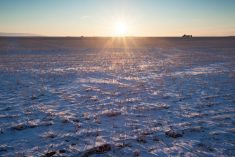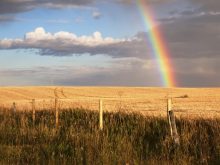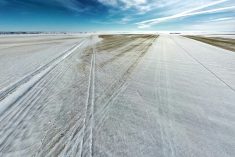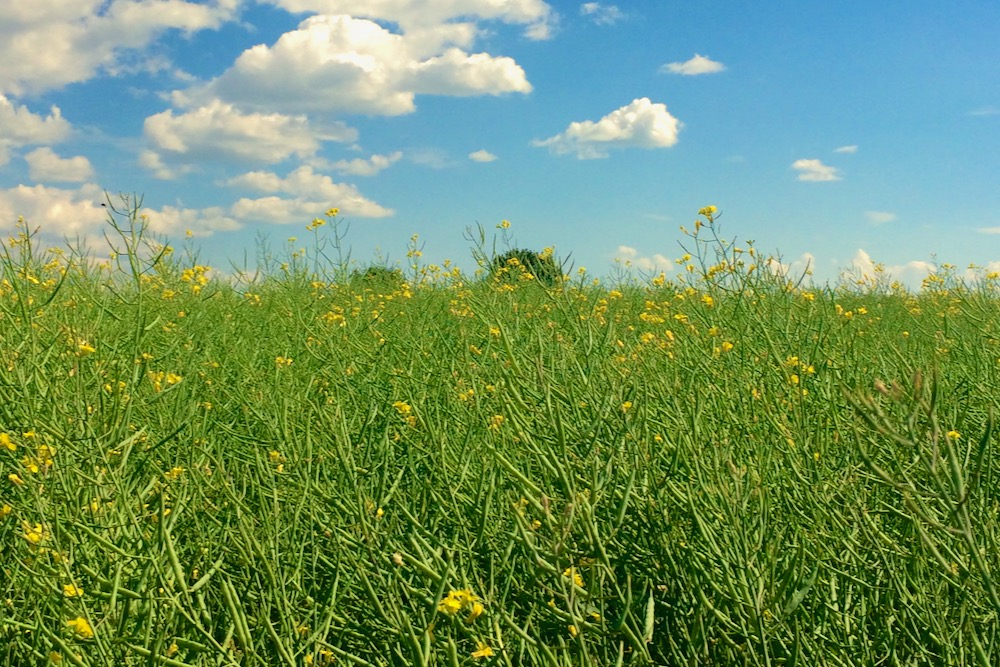In the early 1990s, agriculture in Saskatchewan was still suffering from the devastation of the 1980s. Drought and poor crops with low prices were bad news. But, interest rates as high as 20 per cent were the kicker that resulted in much land going back to FCC or the Royal Bank. (Yes, Virginia, interest rates were that high. Get ready — history is now repeating itself.)
By the early 1990s, land was on sale — big time. As a university professor of soil science, I wanted to own land close enough to home to be able to be involved myself. In 1993 and 1994, I purchased three quarter sections of land in the Allan Hills east of Dundurn. It was hilly, glacial till Weyburn Loam with sloughs, hills and stones. Nothing like the flat Regina Heavy Clay I was raised on. However, the price was right: no mortgage required.
My city slicker friends asked, “Why would you want to buy land? There is no money in farming.”
Read Also

Claas brings 1000 Series SP forage harvesters to Canada
In mid-August, Claas unveiled its new line of Jaguar forage harvesters at an event in Visalia, California, deep in the heart of that state’s dairy region.
My answer was, “Is now not the time? The way to make money is buy low and sell high.” I have now sold two of the three quarters to good advantage but will always keep the “home” quarter with yard site and buildings.
Not at any price
The home quarter (NW22 32 3W3) is not for sale at any price. My downtown financial advisors do not believe it. They say everything has a price. Sorry, folks, but there is no money that will buy that quarter as long as I draw a breath. City slickers do not understand a farmer’s attachment to the land.
I farmed NW22 32 3W3 myself from 1996 to 2019 and have rented the farmland out since 2020. It is cash rent, so I have no skin in the game but take an active interest in the crop. The contract is written so I have access to the crop at any time and can do things to improve the land such as move topsoil, pick stones and plant salty acres to Saltlander Green Wheatgrass. We maintain the yard with buildings, a large garden and large asparagus patch, which is now 20 years old and still thriving.
What follows is information on the crops grown on NW22 32 3W3 for the past 27 years. I do not pretend to be the best farmer, but I have learned a lot over the years because I did have a nickel in the pail.
Lessons included learning about earthworms in 2012 when zero till had been in place for 16 years. That summer I spent much time at the U of S library and online learning about earthworms. I ended up buying a book on earthworms for the home office bookshelves.
Two Grainews pieces described what I knew about earthworms and readers provided great information in response to a questionnaire.
About the same time, I discovered on my rolling land parts of the landscape had a water table shallow enough to be a water source for annual crops. That means natural sub-irrigation with large water volumes available for plant growth. It has made a huge difference in crop yields in the past decade.
I have thought about a three-province map showing areas where a water table is a factor in crop production. Maybe this winter. Manitoba has many areas where the water table is a factor and spits out good yields even when rain is less than needed.
Water use equations useful?
Readers with Henry’s Handbook of Soil and Water can check out pages 114-118 for equations relating crop yield to moisture at seeding plus May 1- July 31 rain. Table 1 shows 27 years of crop yields — actual and calculated — using those equations.
The data in Table 1 below confirm the water use equations are valid and provide a useful piece of information for crop input planning. From 1996 to 2009, the calculated and actual yields were very close.

We were operating “hand to mouth” when it came to water for growing crops. Using the soil probe, I could follow the extraction of soil moisture by the crop and predict when the crop would start going back — if it did not get too hot. A heat wave can put a crop in peril very fast. Once soil moisture reserves are used up it is all over but the shouting in three very hot days.
In 2000, I had herbicide damage with Achieve Liquid Gold on Superb wheat — a relative of the controversial U.S. wheat variety Grandin. The crop looked very sick but did recover and, in the end, did yield 48 bushels per acre. The wheat protein was only 12.7 per cent. Low protein is an indicator that some yield was left in the field because of low nitrogen.
The fusarium years
For many years, the crop rotation was wheat, peas, wheat, canola. That provided an oilseed and a legume for nitrogen fixation. But when the wet years came along, it was too much wheat. Fusarium head blight (FHB) had been a Manitoba problem but with the big snow of 2005 and 20 inches of rain in 2010 (April-October), FHB was a big issue for us. I could still take you to the exact spot where I first observed the ugly pink/orange colour on the wheat heads in 2010.
I was a slow learner and finally seeded barley as it is less affected by fusarium. I found the fungicide spray for fusarium to be a very poor band-aid for a serious problem.
During the fusarium years, I used FHB hours in July as an indicator. Based on extensive U.S. work, a FHB hour was defined as any hour where relative humidity was greater than 90 per cent and temperature was 15 C or greater. The odd-numbered years were very low in FHB. If I had planted wheat in the odd-numbered years, the result would have been much different. Hindsight!
In recent years, the presence of a water table in parts of the landscape and large accumulations of snow on top of dry soil have been a major factor in crop yields. The two are also related.
The large accumulation of snow in dry sloughs can result in a high water table that will be free sub-irrigation. The photo on page 22 shows a part of the quarter where that has been true in spades.
My 2022 renter also knew enough to slow down when he hit the big swaths. He had an excellent and very uniform canola stand and a good crop in this and similar areas of the quarter. It was a pod shatter tolerant variety but hot weather was a problem so he had it swathed overnight.
When he came to combine this and similar areas, he made sure to stick to a speed of two miles per hour to allow the CIH 8240 time to separate what it was threshing. For 2022 conditions, 34 bushels per acre of canola was a very good crop.
I suspect there are still folks that are happy with a 50-bushel canola crop but are leaving enough canola in the field to pay for most of the inputs.
















